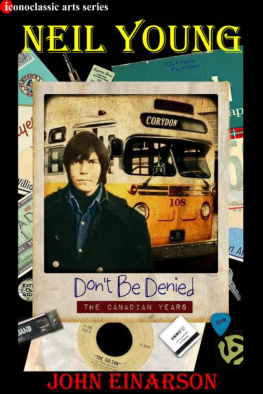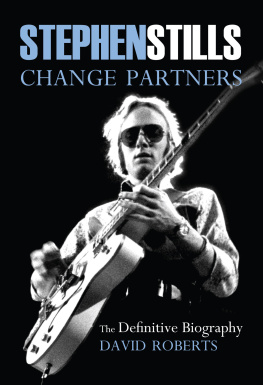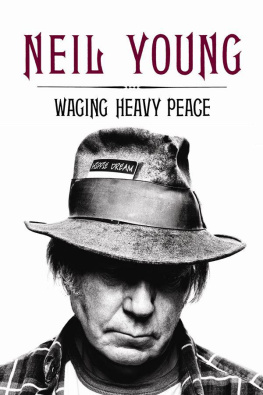Thank you for downloading this Simon & Schuster ebook.
Get a FREE ebook when you join our mailing list. Plus, get updates on new releases, deals, recommended reads, and more from Simon & Schuster. Click below to sign up and see terms and conditions.
CLICK HERE TO SIGN UP
Already a subscriber? Provide your email again so we can register this ebook and send you more of what you like to read. You will continue to receive exclusive offers in your inbox.
We hope you enjoyed reading this Simon & Schuster ebook.
Get a FREE ebook when you join our mailing list. Plus, get updates on new releases, deals, recommended reads, and more from Simon & Schuster. Click below to sign up and see terms and conditions.
CLICK HERE TO SIGN UP
Already a subscriber? Provide your email again so we can register this ebook and send you more of what you like to read. You will continue to receive exclusive offers in your inbox.
Also by Peter Doggett
You Never Give Me Your Money
Electric Shock
The Man Who Sold the World
Theres a Riot Going On
Are You Ready for the Country
For Racheland the musicians
INTRODUCTION
A sked, in a 1985 interview, to imagine an alternative lifetime in which he could have joined any musical outfit in the world, Bob Dylan singled out some of the catalysts of American roots musicpivotal bands in the development of jazz, country, and R&B. Then he astounded the journalist by offering a more modern name, one whose critical standing could hardly have been lower in the year of Live Aid: Crosby, Stills & Nash. A decade later, Dylan recorded a rambling folk ballad entitled Highlands, in whichfor the first time in his careerhe namechecked one of his contemporaries from the world of rock and pop: Neil Young. It was as close as the notoriously reticent Nobel laureate could have come to acknowledging his admiration for a quartet that had been acclaimed as Americas first rock supergroup, and that remains, fifty years later, the most powerful symbol of the so-called Woodstock generation.
David Crosby, Stephen Stills, Graham Nash, and Neil Youngthe singer-songwriter collective universally known as CSNYcame together by accident rather than design. Scarred by their unhappy experiences with the bands from which they escaped in 1967 and 1968, they vowed that they would never become a group . Instead they set out to prove that it was possible for four irrepressibly creative, willfully egotistical individuals to combine their talents without sacrificing their personal identities. But they hadnt allowed for the impact of artistic and commercial success, which transformed this loose, temporary aggregation of musicians into an institution. Crosby, Stills, Nash & Young have spent approximately two of the past fifty years as a functioning band, and the other forty-eight years fending off questions about why they are no longer together. Almost despite themselves, they created a sound and a myth so powerful that it would hang around their necks as a curse, and remain an enduring source of fascination for the rest of the world.
CSNY was never intended to be a quartet, even a transient one. In 1968, three refugees from successful but confining pop bands stumbled into each others company and discovered that when they sang together, they made a sound that was unlike anything else. For several weeks that year, ex-Byrd David Crosby, Buffalo Springfield leader Stephen Stills, and Hollies vocalist Graham Nash showed off their party trick for their peers in Laurel Canyon, and watched them gape in astonishment at the harmony blend they had found. All three men had songs to match, intensely personal expressions of romantic, psychological, and political turmoil that chimed with the spirit of their generation. Soon Crosby, Stills & Nash (alias CSN) was an act with a recording contract, and a manifesto that stressed both their brotherhood and their individual independence. They cut a debut album that caught the mood of the times and stoked rampant demand for a concert tour that could transport the Canyons secret to the rest of America.
Only then did Stills make the fateful decision to invite his sparring partner from Buffalo Springfield, Neil Young, to flesh out the trios sound onstage. His recruitment brought a fourth maverick voice and mercurial songwriter into the mix. It transformed CSN into CSNY, and irrevocably altered the original trios delicate balance of power and creativity. The quartet came to national prominence with their performance at the Woodstock festival in August 1969, after which their music and their image became indissolubly linked with the fate of the baby-boomer era.
The road from Laurel Canyon to Woodstock had spanned precisely one year; and over the next twelve months, everything CSNY had built fell to pieces around them. But the resonance of their image, and the power of their music, remained undimmed, even as it haunted the four mens attempts to thrive outside the band. Eventually, and inevitably, the four men came back together, for an epic, groundbreaking 1974 tour that catapulted rock culture into a new era of greed and excessand also ensured that Crosby, Stills, Nash & Young could never function again as a brotherhood of equals.
How could a union so brief and so troubled have left such a profound impression on American culture? If the initial pull of CSN was their vocal harmonies, what made CSNY so vital, and their legacy so deep, was the impact of their songsand the personalities that powered them. Indeed, the men and their music became impossible to distinguish: their songwriting expressed exactly who they were, and what was happening around them, and it allowed their listeners to locate their own place in a world beset by conflict and oppression.
Each of the quartet had left a distinct mark on the mid-1960s pop scene, from Crosbys chart-topping singles with the Byrds and Nashs worldwide success with the Hollies to Stillss and Youngs tempestuous, inspired work with Buffalo Springfield. With Springfields 1967 hit For What Its Worth, Stills had demonstrated that a song could transcend its origins and become an all-purpose rallying cry in an age searching for direction and stability. What marked out CSNY from their peers was that all four members of the band simultaneously discovered the ability to speak for , and to , their times. They did this in markedly different ways, from Crosbys provocative political rants to Nashs romantic lyricism, Stillss restless self-questioning to Youngs ambiguous poetics. But collectively their four discrete voices combined to make up a force unlike any in rock historya cabal of gifted, driven, arrogant, and fearless lyricists and composers, with the stage presence and raw talent to translate the chaos of a turbulent era into timeless anthems.
It is those tunesCarry On and Long Time Gone, Helpless and Teach Your Children, Ohio and, of course, Joni Mitchells Woodstockthat make up the quartets most beloved legacy. CSN and CSNY released just twenty-two songs together during their brief flowering in 1969 and 1970, and most of them have become rock standards. Theyve formed the heart of every concert that the band (in either formation) has performed since then, arousing a collective sigh of joy from audiences, no matter how stale they have become for their composers. But while crowds called out for a reprise of their greatest hits, all four musicians were desperate to forge new ground, documenting the changes in their psyches, their personal relationships, and the society around them. So the story of CSNY is not only a chronicle of artistic triumph and popular acclaim; its the tale of how four individuals battled to maintain their separate artistic identities when much of their audience simply wanted them to repeat the past.
Next page






